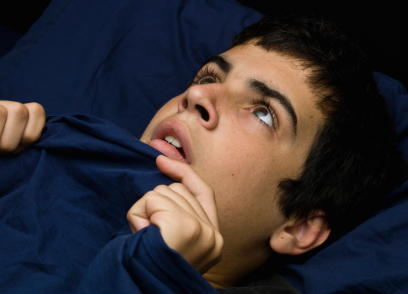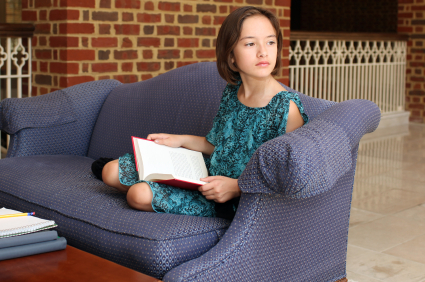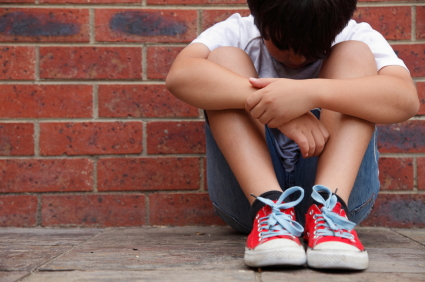Brain Imaging Finds Abnormalities that Appear Over the Course of Childhood-Onset Bipolar Illness
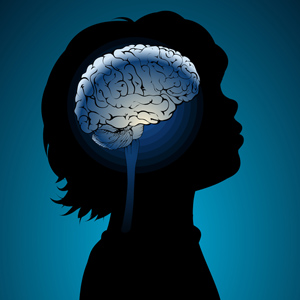 There is considerable evidence that children with bipolar disorder have smaller amygdalas, and the amygdala also appears to be hyper-reactive when these children perform facial emotion recognition tasks. A symposium on longitudinal imaging studies in pediatric bipolar disorder was held at the 2012 meeting of the American Academy of Child and Adolescent Psychiatry to shed light on other brain abnormalities in these children.
There is considerable evidence that children with bipolar disorder have smaller amygdalas, and the amygdala also appears to be hyper-reactive when these children perform facial emotion recognition tasks. A symposium on longitudinal imaging studies in pediatric bipolar disorder was held at the 2012 meeting of the American Academy of Child and Adolescent Psychiatry to shed light on other brain abnormalities in these children.
Researcher Nancy Aldeman reported that there is some evidence children with bipolar disorder have decreased gray matter volume in parts of the brain including the subgenual cingulate gyrus, the orbital frontal cortex, and the superior temporal gyrus, as well as the left dorsolateral prefrontal cortex and amygdala. At the same time there is evidence of increased size of the basal ganglia. These abnormalities do not appear to precede the onset of the illness.
Some changes occur over the course of the illness. The basal ganglia seem to increase in volume in patients with bipolar disorder, but decrease in volume in those with severe mood dysregulation and comorbid ADHD. Moreover, parietal cortex and precuneus cortex volumes appeared to increase in children with bipolar disorder while decreasing or staying the same in normal volunteer controls.
A meta-analysis of brain imaging studies indicated that in general, the size of the amygdala appears to increase from childhood to adulthood in bipolar patients, starting out smaller than that of similarly-aged normal volunteers, but becoming larger than that of adult normal volunteers as the patients age into adulthood.
Lithium treatment increases gray matter volume in a variety of cortical areas and in the hippocampus in multiple studies. In contrast, treatment with valproate for 6 weeks appears to decrease hippocampal volume.
Long-term Course of Bipolar Illness is Most Difficult
While the 4 major childhood-onset psychiatric illnesses we discussed this week (bipolar, unipolar, ADHD, and anxiety disorders) show long term difficulties into adulthood in the majority of instances, it appears that the most severely impacted are those with bipolar disorder. These data are also consistent with retrospective data from multiple cohorts of adults with bipolar disorder, which indicate that those whose illness began in childhood fared more poorly in adulthood than those with adult-onset illness. Thus, while there has been a modicum of treatment research in childhood depression and anxiety disorder and a plethora of treatment studies in ADHD, the dearth of treatment studies in children with bipolar disorder is all the more disconcerting.
Bipolar disorder is common, occurring in some 2 to 3% of children and adolescents, and carries a relatively grave prognosis into adulthood in the majority of instances, especially when it is inadequately treated. Virtually all of the investigators in the area of childhood-onset bipolar who presented at the AACAP meeting have pleaded for increased treatment research for bipolar disorder in children, and one can only hope that their message is soon heard.
Long-term Outcomes for Childhood-Onset Disorders: Anxiety Disorders
A symposium at the 2012 meeting of the American Academy of Child and Adolescent Psychiatry (AACAP) examined long-term outcomes of childhood onset disorders, including bipolar disorder, unipolar depression, ADHD, and anxiety disorder.
Course of Childhood Onset Anxiety Disorders
Danny Pine presented a study of 191 adolescents with an anxiety disorder, among whom 36% showed no anxiety disorder in adulthood, while 62% continued to have an anxiety disorder. Among a control population, 390 adolescents without an anxiety disorder remained so in adulthood, while 36 developed new onset of an anxiety disorder in adulthood. Sixty-two of the 98 participants who had anxiety disorders in adulthood had had the disorder continuously from its onset in adolescence. Thus, it appears that approximately two-thirds of adults with an anxiety disorder show a persistence of their childhood onset anxiety disorder, while approximately 1/3 had a new anxiety disorder diagnosis.
Editor’s Note: While all 4 of these major childhood onset psychiatric illnesses (bipolar, unipolar, ADHD, and anxiety disorders) show long term difficulties into adulthood in the majority of instances, it appears that the most severely impacted are those with bipolar disorder. These data are also consistent with retrospective data from multiple cohorts of adults with bipolar disorder, which indicate that those whose illness began in childhood fared more poorly in adulthood than those with adult-onset illness. Thus, while there has been a modicum of treatment research in childhood depression and anxiety disorder and a plethora of treatment studies in ADHD, the dearth of treatment studies in children with bipolar disorder is all the more disconcerting.
Bipolar disorder is common, occurring in some 2 to 3% of children and adolescents, and carries a relatively grave prognosis into adulthood in the majority of instances, especially when it is inadequately treated. Virtually all of the investigators in the area of childhood-onset bipolar who presented at the AACAP meeting have pleaded for increased treatment research for bipolar disorder in children, and one can only hope that their message is soon heard.
Long-term Outcomes for Childhood-Onset Disorders: ADHD
A symposium at the 2012 meeting of the American Academy of Child and Adolescent Psychiatry (AACAP) examined long-term outcomes of childhood onset disorders, including bipolar disorder, unipolar depression, ADHD, and anxiety disorder.
Course of Childhood Onset ADHD
Lily Hechtman reported on the long-term difficulties of adolescents who had childhood onset of attention deficit hyperactivity disorder (ADHD). They often experienced: continued typical symptoms including restlessness and over-activity, decreased academic performance, deficits in social interactions, and decreased self-esteem.
Twenty-five percent developed an antisocial personality disorder with 19-50% of these having difficulties with the legal system. There were again three distinct groups that showed different patterns of outcome. Thirty percent of the sample showed essential normality into adolescence and young adulthood. Sixty percent had continuous ADHD symptomatology, and 10% had serious psychiatric illness resulting in jail or hospitalization.
Other follow-up studies that extend as far as 40 years suggest that ADHD persists in older adults at a rate of 36%, while antisocial personality persists in 10%, and substance abuse in 17%. Adolescent controls went on to experience these disorders in adulthood at respective rates of 13%, 0%, and 7%. Hechtman provided systematic data that treatment of ADHD was not a risk factor for the subsequent adoption of substance abuse.
In another study, a latent class analysis showed that about 52% of those with ADHD became well and stayed well. The predictors of this good outcome were: lack of maternal drug exposure in the prenatal period, a stable family, not being on welfare, not having a comorbid psychiatric diagnosis, not having a severe form of ADHD, and not having lower social functioning at baseline.
There is some evidence that treatment of ADHD in young adults can lead to psychosocial benefits. In one study performed in 1984, a group of college-age participants treated with stimulants for 3 to 5 years showed improvement in social skills and self-esteem, but surprisingly, no increase in academic performance.
Course of Childhood Onset Anxiety Disorders
Danny Pine presented a study of 191 adolescents with an anxiety disorder, among whom 36% showed no anxiety disorder in adulthood, while 62% continued to have an anxiety disorder. Among a control population, 390 adolescents without an anxiety disorder remained so in adulthood, while 36 developed new onset of an anxiety disorder in adulthood. Sixty-two of the 98 participants who had anxiety disorders in adulthood had had the disorder continuously from its onset in adolescence. Thus, it appears that approximately two-thirds of adults with an anxiety disorder show a persistence of their childhood onset anxiety disorder, while approximately 1/3 had a new anxiety disorder diagnosis.
Long-term Outcomes for Childhood-Onset Disorders: Depression
A symposium at the 2012 meeting of the American Academy of Child and Adolescent Psychiatry (AACAP) examined long-term outcomes of childhood onset disorders, including bipolar disorder, unipolar depression, ADHD, and anxiety disorder.
The Course of Childhood Onset Depression
Gabrielle Carlson presented the work of Karen Wagner on unipolar depression, in which there was a 15.3% incidence of unipolar depression in female adolescents, and 7.7% incidence in males. The overall incidence increased with age; from 8.4% in children aged 13, to 12.6% in children age 15 and 21.4% in children age 17. Average duration of a depressive episode was 17 months. While 85% recovered, 40% of those who recovered experienced a recurrence.
Carlson also presented data from Barbara Geller indicating that among children hospitalized with pre-pubertal onset of depression, 33% eventually were diagnosed with bipolar I disorder. If diagnoses of bipolar II and BP-NOS were included, the rate at which these children who got depressed before puberty eventually developing a bipolar disorder increased to an astonishingly high 49%. Thus, very early onset depression has a 50/50 chance of predicting an eventual bipolar disorder diagnosis.
Predictors of a more difficult course of depressive illness presentation were: earliest onset, more than 3 episodes, longer duration of depressive illness, and a positive family history. Those with early-onset depression had more suicidality, smoking, drug abuse, alcoholism, and an increased incidence of not having children when they became adults.
The Treatment for Adolescents with Depression Study (TADS) performed at the National Institute of Mental Health compared antidepressant response to fluoxetine, cognitive behavioral therapy (CBT), or the combination of fluoxetine plus CBT. Early in the study, the combination was most effective, with response in 39% of the children, compared to 24% for fluoxetine and 19% for CBT alone. However, after 3 years of follow up, all of the groups showed a relatively similar percent response: 60% for the combination; 55% for fluoxetine; and 64% for CBT.
Long-term Outcomes for Childhood-Onset Disorders: Bipolar Disorder
This week we’ll be summarizing the research on long-term outcomes for four childhood-onset illnesses: bipolar disorder, unipolar depression, attention-deficit hyperactivity disorder (ADHD), and anxiety disorder. The information comes from a symposium at the 2012 meeting of the American Academy of Child and Adolescent Psychiatry (AACAP).
Course of Childhood Onset Bipolar Disorder
At the AACAP meeting, researcher Boris Birmaher discussed the considerable differences in presentations of bipolar disorder in childhood versus in adolescence. In childhood there appeared to be a more sub-syndromal symptoms or diagnoses of bipolar not otherwise specified (BP-NOS). There were more mixed symptoms, more hallucinations, worse course of illness, more comorbidities with ADHD and oppositional defiant disorder, and more separation anxiety disorder. In contrast, in adolescence there were more diagnoses of bipolar I and bipolar II, major depression, mania with elation and grandiosity, substance abuse, and conduct disorder.
Birmaher reported that while most children with early-onset mania recovered within two years, roughly 80% experienced recurrences over the next two to five years. Over a follow-up period of four years, 30% remained euthymic, 40% had continuing substantial symptoms, and 20% remained seriously ill. Birmaher’s data indicate that those with childhood-onset bipolar illness remained symptomatic during 60% of the follow-up period.
Predictors of a more difficult outcome included an early onset, a BP-NOS presentation, longer duration of illness, any comorbid illness, lower socioeconomic status, and a family history of bipolar disorder in first-degree relatives. Birmaher reported that these data in childhood-onset mania were consistent with earlier research by Judd and colleagues in a longitudinal follow-up study of adult patients with bipolar disorder. However, there were three major differences. The proportion of time well was lower in children (41.1%) than in adults (52.7%). Time in mixed episodes or rapid cycling was higher in childhood-onset bipolar disorder (28.9%) than in adults (5.9%). Rapid changes in polarity were also more common in children (15.7% ) than in adults (3.5%). Read more
Long Delays to First Treatment Are Crippling Many with Bipolar Disorder: What You Can Do
An article published by N. Drancourt et al. in the journal Acta Psychiatra Scandinavica this year examined the duration of the period between a first mood episode and treatment with a mood stabilizer among 501 patients with bipolar disorder. The time between a first episode of depression, mania, or hypomania and first treatment averaged 9.7 years. The authors conclude that more screening, better recognition of the early stages of the illness, and greater awareness are needed to decrease this long delay.
Editor’s Note: The article by Dancourt et al. replicates earlier findings of an average treatment delay of 10 years among bipolar patients from the treatment network in which this editor (Robert Post) is an investigator (formerly the Stanley Foundation Bipolar Network, now called the Bipolar Collaborative Network). The duration of the untreated interval (DUP) for patients with bipolar disorder is unacceptably long and carries a heavy price.
Those with the earliest age of onset experience the longest delay to first treatment. Early onset is associated with poor outcome compared to adult onset bipolar disorder, and the duration of time untreated adds a separate, independent risk of a worse outcome in adulthood, especially more frequent and severe depression, more episodes, and less time well.
What patients and doctors can do to shorten this interval to first treatment: Know the risk factors for early onset bipolar disorder so you can seek evaluation and advise treatment as appropriate. Read more
Earlier Age of Onset of Bipolar Illness in the US Compared to Europe
 As we have previously reported in the BNN, the Bipolar Collaborative Network (including this editor Robert M. Post) found that patients from 4 sites in the United States had significantly earlier ages of onset of their bipolar illness compared to 3 sites in the Netherlands and Germany). These findings have been replicated by Frank Bellivier et al., who used a broader sample of European participants.
As we have previously reported in the BNN, the Bipolar Collaborative Network (including this editor Robert M. Post) found that patients from 4 sites in the United States had significantly earlier ages of onset of their bipolar illness compared to 3 sites in the Netherlands and Germany). These findings have been replicated by Frank Bellivier et al., who used a broader sample of European participants.
Bellivier’s research group studied two large samples of bipolar I patients from the US (n= 2275) and from 14 countries in Europe (n= 3616). The researchers found 3 different distributions of age of onset, and patients from the US had a greater representation in the early age of onset subgroup. Sixty-three percent of the sample from the US fell into the early-onset group versus 25% of those from Europe. The mean age of onset of the early-onset subgroup was significantly lower in the US sample (14.5 +/- 4.9 years) than in the European sample (19 +/- 2.7 years).
Editor’s Note: It is time that we took these geographical differences in the frequency of early age of onset of bipolar disorder seriously. While some controversy has surrounded the diagnosis of bipolar illness in children, it becomes increasingly important to recognize that this bona fide, well-diagnosed illness is more common in children from the US than from many other countries. Affected children should have careful clinical evaluation and, if the diagnosis warrants, definitive treatment. This should include both psychoeducational approaches; focused psychotherapies, including the family-focused therapy pioneered by Dave Miklowitz; and psychopharmacological intervention. When this kind of combined treatment is implemented, young patients who are treated with lithium, another mood stabilizer, or an atypical antipsychotic do much better than those who do not receive these consensus-based treatments.
Treatment algorithms for children of different ages with bipolar disorder are still being developed. However, it appears that in young and very young children, the atypical antipsychotics are often more effective than lithium or valproate monotherapy, as suggested in recent large randomized clinical trials. Initiating appropriate treatment is extremely important, since the duration of the untreated interval (that is, the time from illness onset to first treatment) is directly related to worse outcomes in adulthood. The longer the duration of untreated illness, the greater the severity of depression, the longer the duration of depression, and the greater the number of episodes an adult experiences.
As might be expected from the earlier age of onset of bipolar disorder, US patients also have a higher incidence of the major vulnerability factors for early onset—more genetic vulnerability (parents with bipolar disorder), more childhood stressors, and more stressors in the year prior to illness onset. Patients from the US also had a variety of other poor prognosis factors, including a higher degree of anxiety comorbidity, alcohol and substance abuse problems, a higher incidence of having more than 20 episodes over their lifetime, and a higher incidence of rapid cycling. All of these characteristics combine to produce worse outcomes in adult patients from the US compared to those from Europe. Earlier and more judicious treatment of the illness in the United States is needed to help ward off this more pernicious course of bipolar illness.
Treating Bipolar Depression in Youth
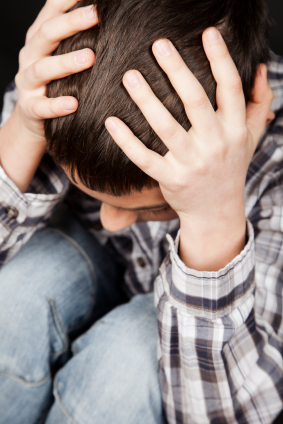 At the Ryan Licht Sang pediatric bipolar conference in March, researcher Karen Dineen Wagner summarized the controlled data on treatment of bipolar depression in children. Almost no data exist, with the exception of one study in which quetiapine (Seroquel) was not found to be more effective than placebo.
At the Ryan Licht Sang pediatric bipolar conference in March, researcher Karen Dineen Wagner summarized the controlled data on treatment of bipolar depression in children. Almost no data exist, with the exception of one study in which quetiapine (Seroquel) was not found to be more effective than placebo.
Unlike mania, for which there are several approved treatments for children aged 10 to 17, there are no FDA-approved treatments for bipolar depression in children.
In adults, quetiapine is the only approved monotherapy for bipolar depression, and the only other approved treatment is the combination of fluoxetine and olanzapine. Despite the frequency with which conventional antidepressants (SSRIs, SNRIs, bupropion, and tricyclic antidepressants) are prescribed for bipolar depression, the data on their efficacy is mostly negative, based on a 2010 meta-analysis by researchers Sidor and MacQueen.
Given that there is little data available even for adults, Wagner reviewed the open (uncontrolled) studies on depression in children with bipolar disorder. Some evidence of good response to lithium or lamotrigine can be found in case series and chart reviews. In studies of atypical antipsychotics for mania in children, the mania rating scales used contain items about depression, and these often show some improvement.
Wagner concluded that one option is to use monotherapy with atypicals, lithium, or lamotrigine in children with bipolar depression.
Wagner created a revised Mood Disorder Questionnaire for Adolescents (MDQ-A), which focuses on a possible diagnosis of bipolar disorder instead of unipolar depression. This was published in the Journal of Clinical Psychiatry in 2006 and we have reproduced it here. Dr. Wagner indicated that the instrument is more valid when the answers are supplied by a parent than by the adolescent.
Editor’s Note: The lack of research on the treatment of children with bipolar disorder is a public health problem. Read more
The Explosive Combination of Bipolar Disorder and Substance Abuse
At the 2012 annual meeting on pediatric bipolar disorder sponsored by the Ryan Licht Sang Foundation and Massachusetts General Hospital, Timothy E. Wilens gave a plenary talk on “The Explosive Combination of Bipolar and Substance Abuse.”
Wilens cited the statistic that 10% of adolescents in the general US population have at some time received a diagnosis of a substance abuse disorder. The age of onset of substance abuse peaks between ages 15 and 20.
Wilens said that in a recent survey about use in the past month, among participants in the general population aged 12 or higher with substance use, about 50% use marijuana and about 50% use prescription narcotics (often obtained from their parents’ medicine chest).
The rate of mortality from substance abuse has risen dramatically since 1993 and now approximates that from automobile accidents. According to Wilens, rates of emergency room visits and fatalities have increased recently, and this has been linked to opiate overdoses.
Adolescents with bipolar disorder are at greatly increased risk of substance abuse compared to the general population. Most substance abuse follows the onset of bipolar disorder, not vice versa.
Wilens cited the data of researcher Ben Goldstein that on 8-year follow up, 32% of bipolar adolescents developed a substance use disorder. Those treated with antimanic agents were much less likely to develop a substance use disorder. MORAL: Treat bipolar disorder psychopathology in adolescents well and help them avoid substance abuse.
Children with persistent emotion dysregulation were: 1) more likely to develop a substance use disorder; 2) more likely to begin using substances earlier; and 3) more likely to have a more severe form of combined (multiple) substance use disorders.
Treating Substance Use
Wilen suggested that a good interview is better than urine toxicology screens for assessing substance use. He suggested the following treatment paradigm: Read more


